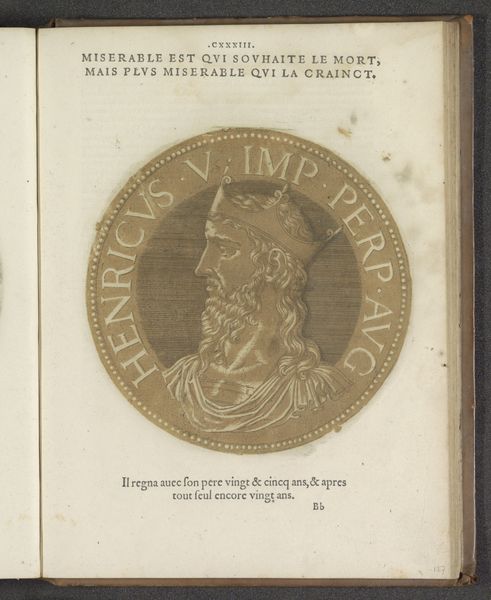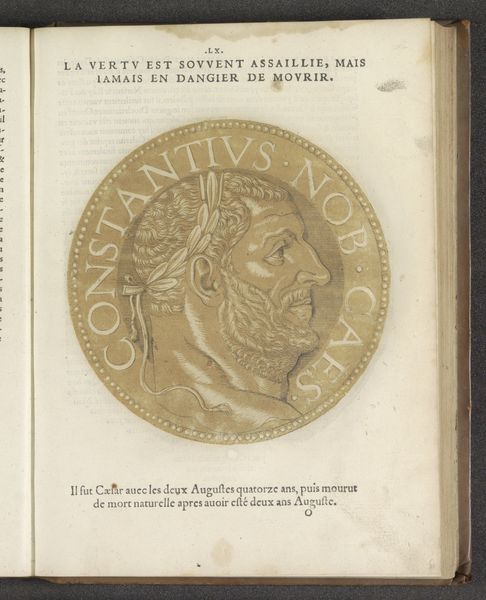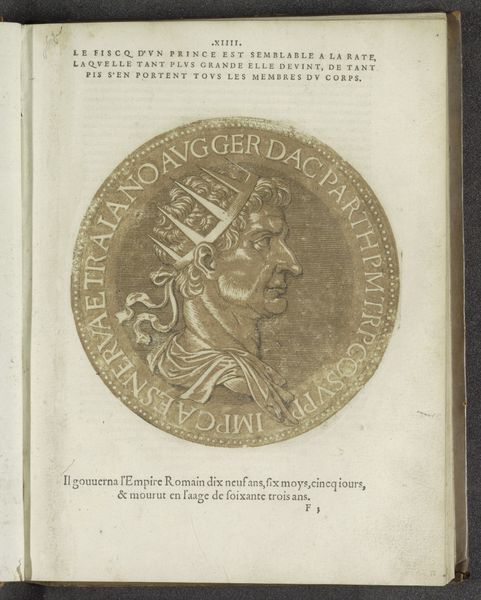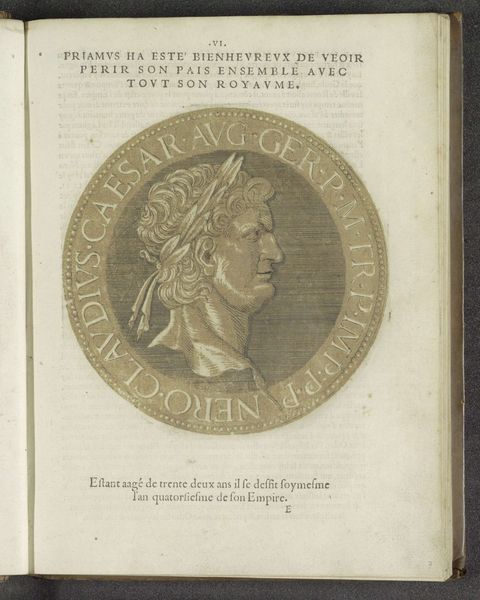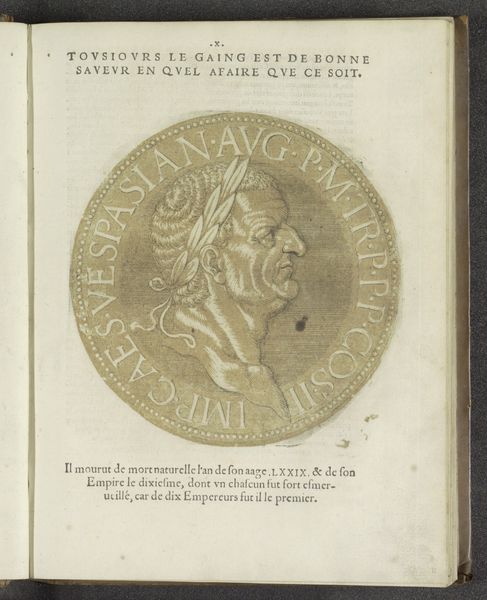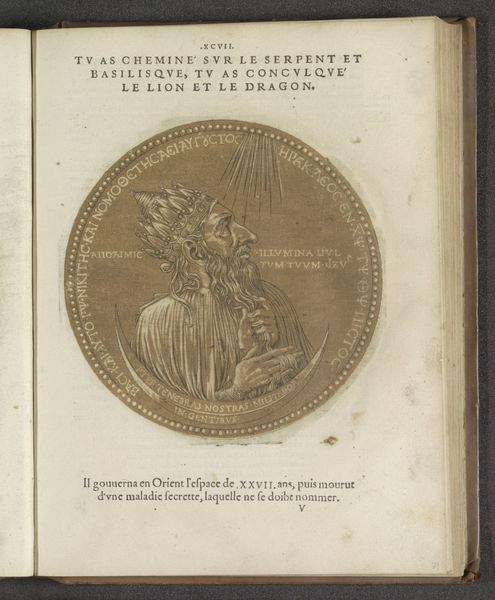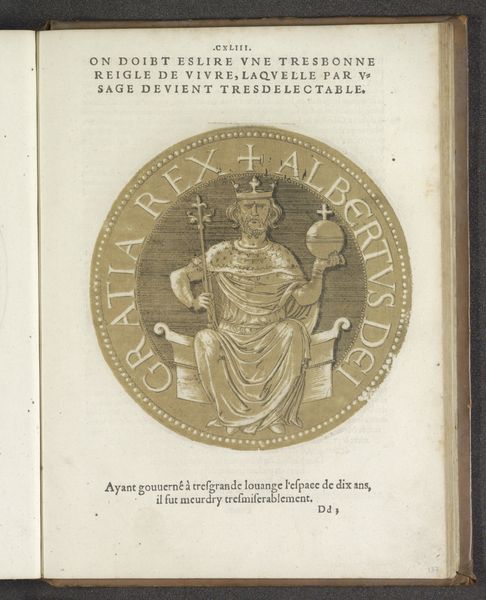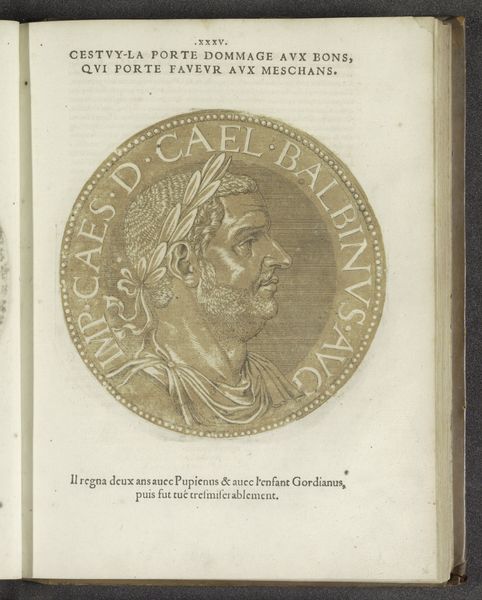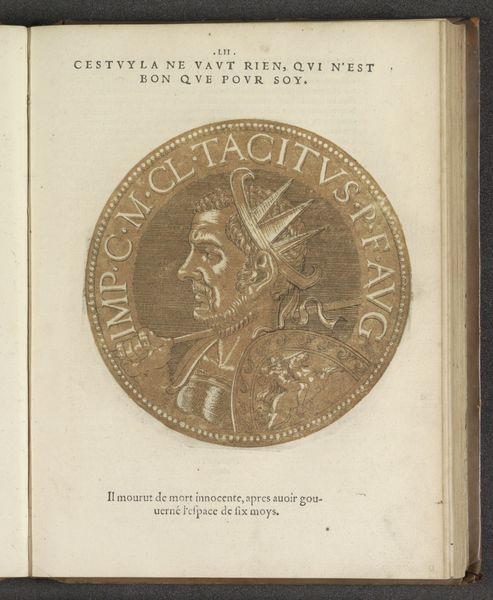
print, engraving
#
portrait
#
byzantine-art
#
medieval
# print
#
figuration
#
coloured pencil
#
ancient-mediterranean
#
engraving
Dimensions: height 180 mm, width 179 mm
Copyright: Rijks Museum: Open Domain
Curator: Look at this captivating engraving: "Portret van keizer Justinianus I," dating back to somewhere between 1557 and 1559, crafted by Joos Gietleughen. It's a fantastic example of portraiture influenced by Byzantine art during the medieval period. Editor: My first impression is of solemnity. The profile view, encased in a circular frame resembling a coin or medallion, feels weighty, like an emblem of power carefully preserved through time. Curator: It certainly speaks to the authority Justinian I held as the Byzantine Emperor. Consider how the print medium allowed for the widespread dissemination of his image and the projection of imperial power. The engraving, with its lines and shading, conveys a sense of his perceived wisdom and strength to a broad audience. Editor: Absolutely, and it makes me consider how such imagery functioned to legitimize power structures. The crown, the text encircling his portrait... It all serves to reinforce the idea of a divinely appointed ruler. I am struck by the deliberate act of constructing this identity within very specific political and social circumstances. The portrait’s visual language resonates with very clear messages. Curator: It is interesting to see how the engraver blends classical influences with contemporary artistic conventions. While rooted in Byzantine tradition, this rendering of Justinian clearly reflects the stylistic tendencies prevalent in the 16th century, indicative of the way historical figures are re-imagined in subsequent eras. Editor: Right, we have to consider the lens through which we're viewing Justinian here. This isn't a straightforward, objective portrayal but a constructed image, layered with the values and intentions of its creator and the socio-political landscape of the 16th century. It certainly makes us think about the use of art for political ends, something very relevant even today. Curator: Precisely, and by examining the conditions of this portrait's creation and reception, we can learn a great deal about the public role of art. Thank you for expanding this point so well. Editor: Thank you! Exploring those kinds of broader narratives provides deeper engagement, and reminds us to reflect on how historical representations resonate, even now.
Comments
No comments
Be the first to comment and join the conversation on the ultimate creative platform.
